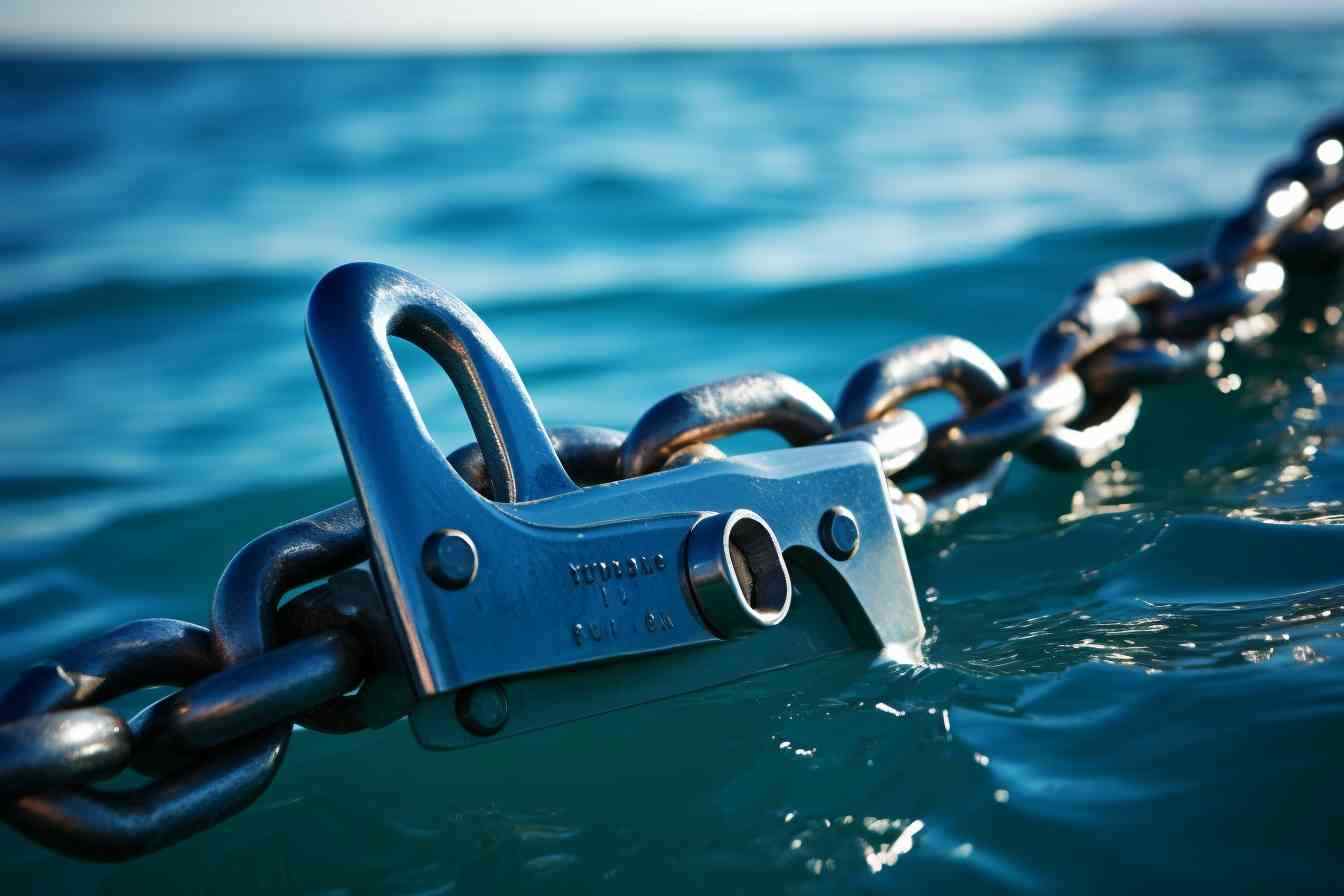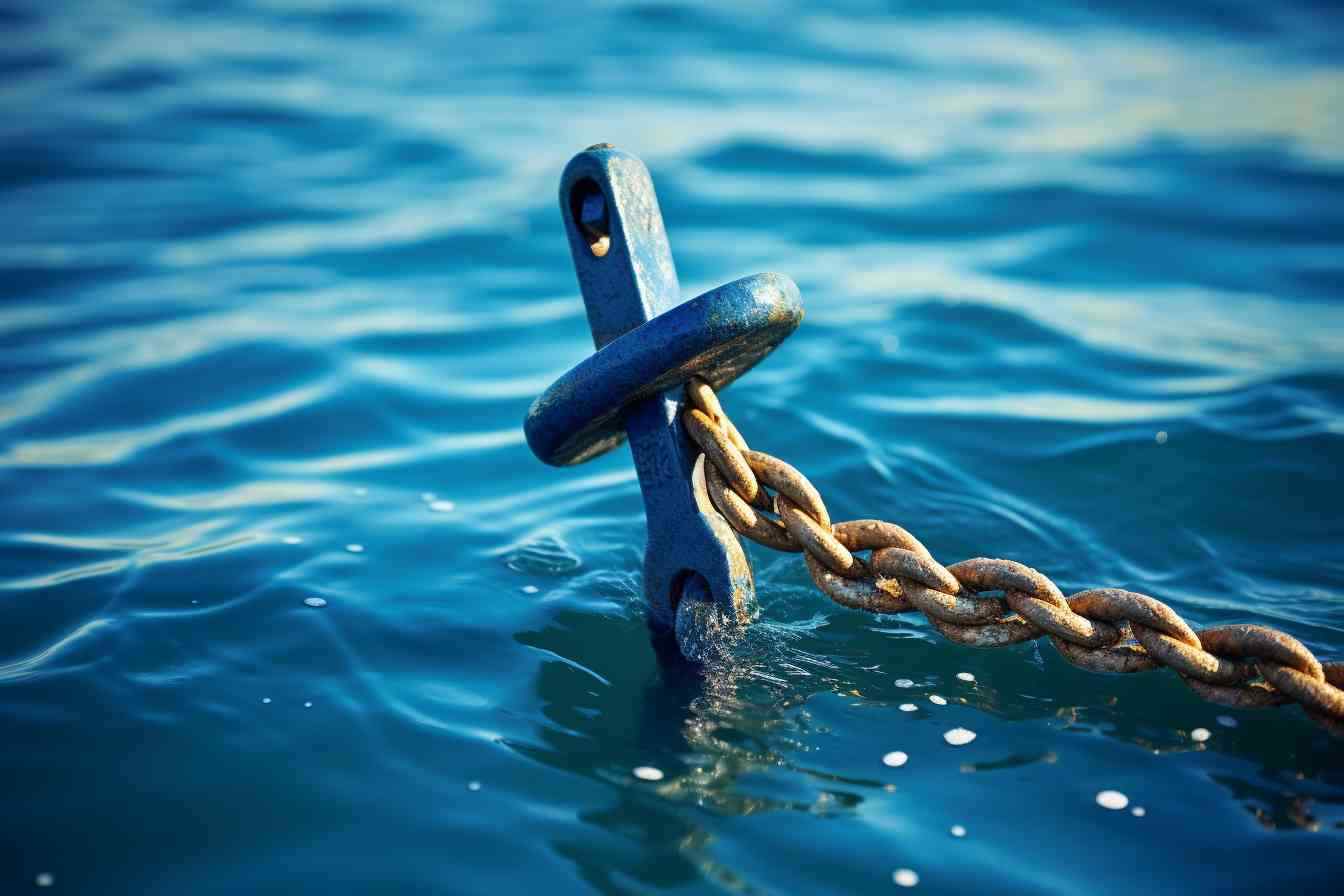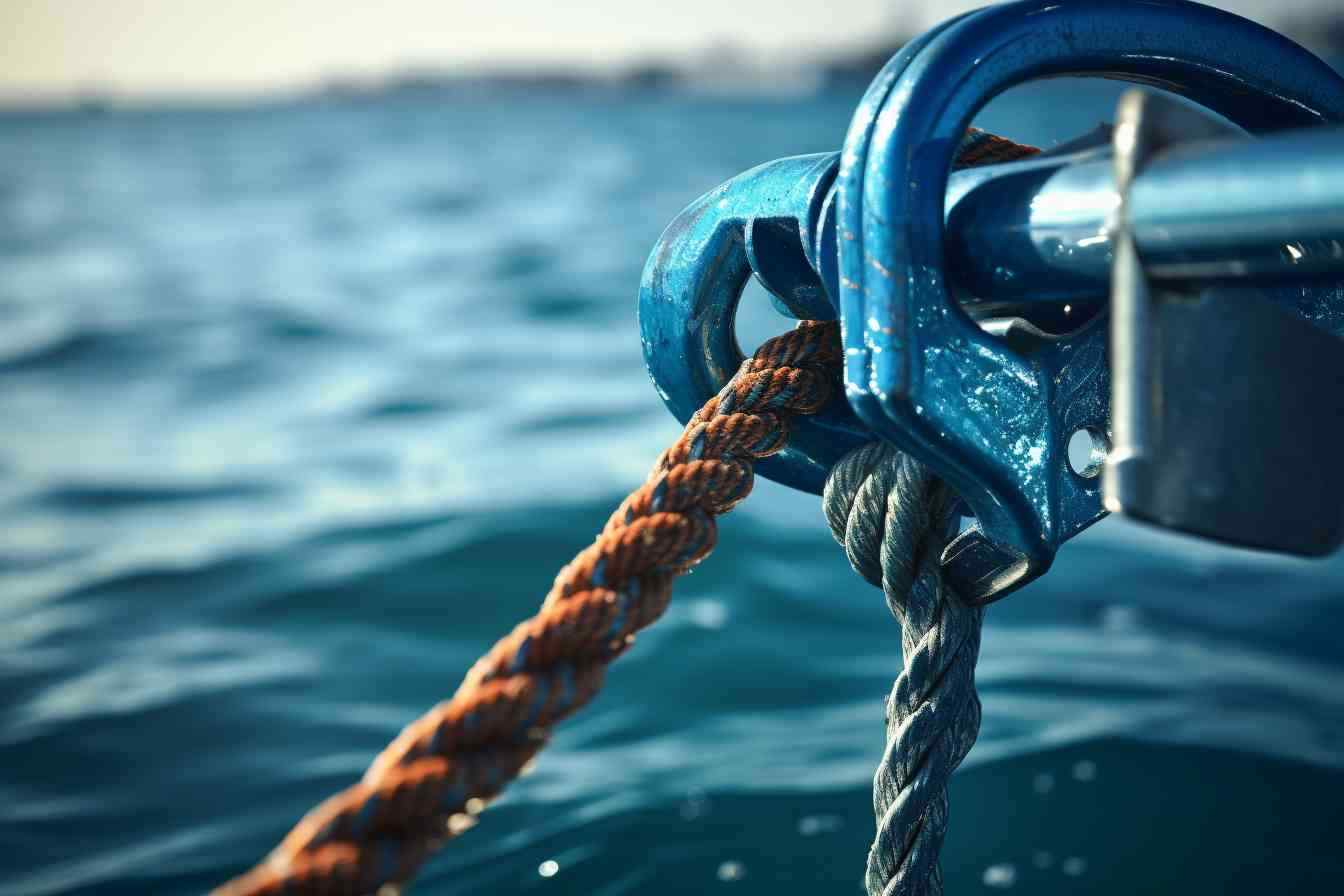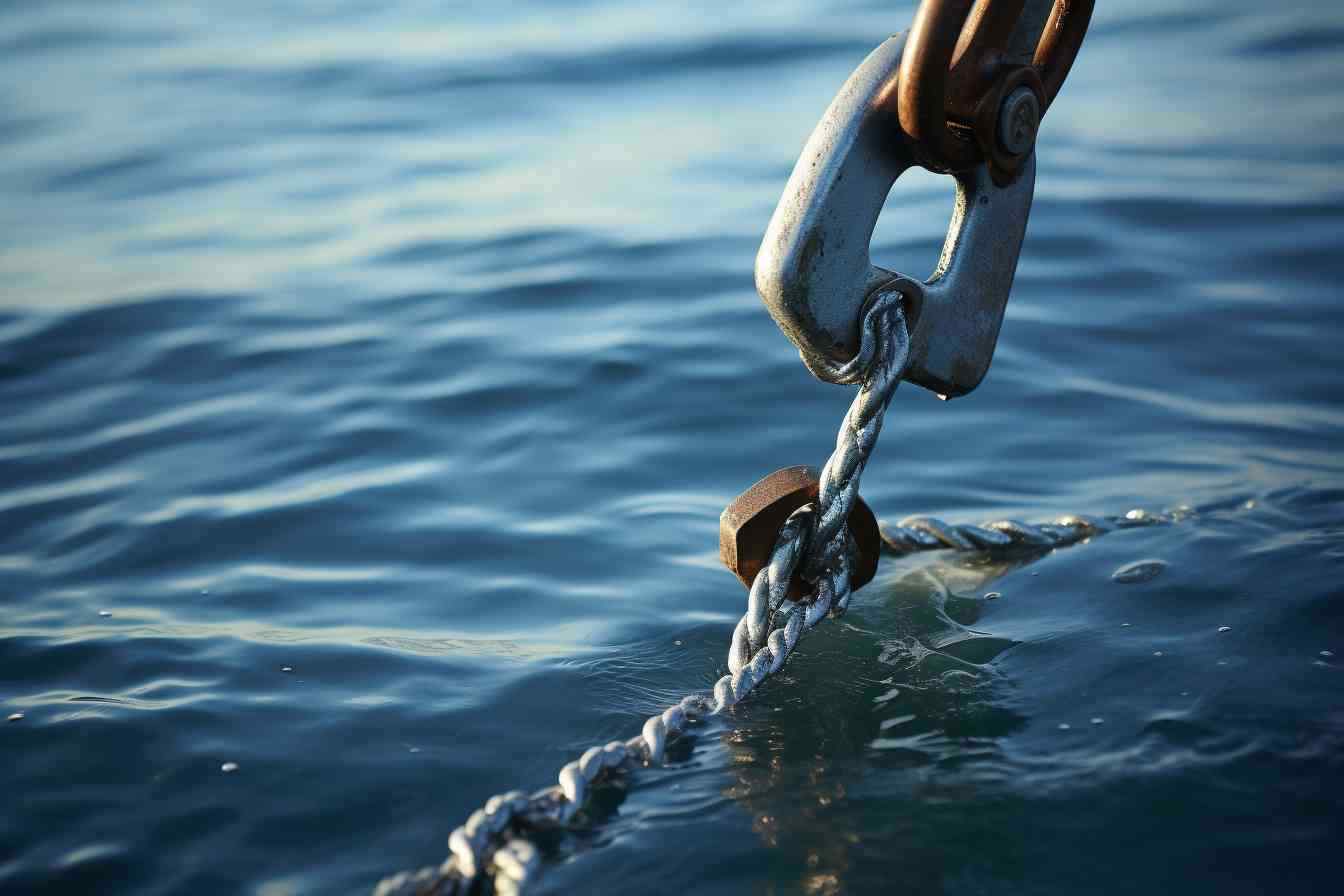Mastering Stability The Ultimate Guide to Kayak Anchors

Summary
- Intro: A Guide To Kayak Anchors: Keeping Your Kayak In One Place
- How Do I Keep My Kayak From Drifting?
- Where Is The Best Place To Put A Kayak Anchor?
- How Do You Secure An Anchor To A Kayak?
- How Heavy Should A Kayak Anchor Be?
- Final Verdict
- Frequently Asked Questions
- How do I choose the right kayak anchor?
- What’s the best type of kayak anchor for rivers?
- Can I use a sandbag as a kayak anchor?
- How long should my anchor line be?
- Do I need a special kayak anchor on windy days?
- How do I store my kayak anchor on board?
- Is it safe to anchor in deep water with my kayak?
- What’s an anchor trolley, and do I need one?
- Can the anchor damage my kayak?
- Do I always need an anchor while kayaking?
- What do I do if my kayak anchor gets stuck?
- Related Video
- Frequently Asked Questions
Intro: A Guide To Kayak Anchors: Keeping Your Kayak In One Place

Choosing the Right Anchor for Your Kayak So I’ve found myself out on the lake, paddle in hand, and the view? Just stunning. Suddenly, the urge hits – gotta grab that camera from the dry bag and snap a picture. But just as I line up the perfect shot, I’m slowly drifting away from that pristine angle. Tethering your kayak is vital, trust me. Picking the right anchor ain’t just about keeping still for photos—it’s also about safety and convenience.
Now, kayak anchors come in all shapes and sizes. I’ve learned that the folding grapnel anchor, for instance, is perfect for those rocky or coral surfaces. It really bites into the terrain, keeping you from floating off. But let’s say you’ve got a soft, muddy bottom; that’s where a Bruce-style or plow anchor comes in handy. It digs in and holds well. Gotta acknowledge the weight too—a heavy anchor’s overkill for a kayak. Usually, something in the range of 1.5 to 3 pounds does the trick.
Setting Up Your Kayak Anchor System Alright, you’ve got your anchor – nice. But hooking it up is where the rubber meets the road, or should I say, where the anchor meets the water? Let’s dive in. When I first set up my anchoring system, I realized that it’s about more than just the anchor. It’s about the full kit and caboodle – the line, the buoy, and the trolley system, oh boy.
Here’s what goes through my head when I’m setting up: “What’s my water depth? What’s the current like? Gotta make sure I have enough line to hold the bottom.” You want a good rule of thumb? Go for a ratio of 7:1 – that’s seven feet of line for every foot of water. And that trolley system? It’s a game-changer. It lets me adjust my anchor line from any point along my kayak, giving me the freedom to face into the current or wind, and that, my friends, is the sweet spot for stability.
Maintaining Your Kayak Anchor Maintenance, ugh, it’s like that chore you can’t ignore, but it’s key to a trusty anchor. After each trip, I inspect the whole shebang. Rust, frays, or any wear and tear on the line can spell trouble. If something looks off, I replace it faster than you can say ‘paddle’. I’ve learned the hard way, a neglected anchor setup can really put you in a pickle.
And don’t forget to rinse everything with fresh water, especially if you’ve been in saltwater – that stuff is corrosive. Then, I’ll give the moving parts of my folding anchor a little love with some lubrication. It’s like keeping your engine oiled, it just runs better. Regular care means I’m not left anchorless at a time when I need it the most. It’s all about peace of mind, folks.
How Do I Keep My Kayak From Drifting?

Oh, I’ve been there—out on the water, in a serene spot perfect for fishing, and just when I’m about to make my cast, whoosh—my kayak starts drifting away with the current. It’s enough to drive a person bonkers! But keeping your kayak from turning into a wandering vessel isn’t as tough as it might seem.
First things first, grab yourself a decent kayak anchor; that’s your key to holding ground. Think about the weight—something in the range of 3 to 10 pounds usually does the trick without turning your yaking into a weightlifting session. The lighter ones are fine for calm waters, but if you’re paddling somewhere with a bit more oomph in the water, you’ll want something a tad heftier.
Then there’s the shape to consider. You got your grapnel anchors, which are terrific for rocky or reefy bottoms, because those little flukes grip like they’re holding on for dear life. For sandy or muddy beds, go with a Bruce-style or plow anchor—they dig in and hold tight without a fuss.
Now, the anchoring technique—isn’t rocket science, but it’s got its nuances. Always lower the anchor slowly to avoid spooking the fish or getting tangled. And let out enough rope—or ‘scope,’ as us yak-fishers say—cause that’s what gives the anchor its holding power. A good rule of thumb is a 7:1 ratio of line to water depth; keeps things steady.
Lastly, consider the tides and winds when you drop anchor. You don’t want to be caught off guard and turned around. Keeping an eye on the weather and understanding how it’ll affect the water can save you a heap of trouble.
So, don’t let your kayak be the one that got away! With a trusty anchor and a bit of know-how, that beautiful spot on the lake will be yours, and only yours, for as long as you please.
Where Is The Best Place To Put A Kayak Anchor?

Well, when it comes to anchoring your kayak, it’s not just about dropping it anywhere and hoping for the best, right? You’ve got to be a bit strategic about it. The ideal spot really hinges on the water conditions and what you’re aiming to do once you’re anchored. If you’re fishing, you might want a different position than if you’re just soaking up the sun.
So, let’s break it down. In a river or stream, you want to anchor from the downstream side of your kayak, keeping the current in mind, so it doesn’t flip you over — talk about a wet surprise! In the ocean or a lake, it’s a whole different ball game because of the wind and tides. Look for a spot where the wind or current is hitting the side of your kayak; this’ll make it steady as she goes.
Another top tip is to consider the depth of the water. If it’s too shallow, your kayak might end up like a beached whale, and too deep means you’ll need more anchor line to keep it secure. It’s like finding the Goldilocks zone, not too deep, not too shallow, just right.
Remember, you want to keep clear of places where boats zoom by, since you don’t wanna be rocking the boat unintentionally. Plus, steer clear of environmentally sensitive areas where your anchor could damage the seabed or, worse, get tangled up with some local flora and fauna. Ouch, right? You’ve got to think about these things, or you’ll be in for a rude awakening. Trust me, it’s like learning to tie your shoes – seems complicated at first, but once you get the hang of it, it’s smooth sailing. Or should I say, smooth kayaking?
How To Anchor A Kayak Without A Trolley
Kayak anchoring without a trolley can be a smooth sail if you know the ropes. It’s all about being resourceful and knowing your environment. Here’s how you can keep your kayak steady without the fancy gadgets:
- Choose the right anchor: You’ve gotta pick an anchor that suits the body of water you’re in. If the bottom’s muddy, a grappling anchor might just do the trick; meanwhile, a sandy seabed calls for a fluke anchor. It’s crucial to match the anchor type to the conditions.
- Mind the length of the anchor line: Ever heard of the ‘rule of sevens’? For every foot of water you’re in, you’ll need seven feet of line. Shortchanging yourself on the line means your anchor may not hold bottom—now, that’d be a real drag.
- Consider a quick-release system: In a pickle, you’ll want to be able to ditch your anchor faster than a hot potato. A quick-release clip could be a game-changer, making it a breeze to disconnect if the currents turn against you.
- Make use of a buoy: Tying a buoy to your anchor line is like leaving breadcrumbs to find your way home. Not only will it mark your anchor’s location, but it’ll also avoid any accidental trips or entanglement with the line.
- Learn the anchor hitch: Tying your anchor to the kayak is no joke—you want that knot tighter than a drum. The anchor hitch is your best bet for a secure connection, and it’s easier than falling off a log once you get the hang of it.
- Anchor from the stern or bow: Anchoring from the side’s a rookie move—you’ll be spinning like a top. Instead, drop your anchor from the stern or bow to face the current or wind head-on, keeping everything nice and steady.
- Be aware of changing conditions: Mother Nature’s full of surprises. Keep a weather eye on the horizon for any shifts that might mean it’s time to move. Don’t get caught napping, or you could be in for a wild ride.
Remember, anchoring a kayak isn’t about brute force—it’s about finesse and understanding the elements. With these tips, even without a trolley, you’ll be holding your spot like a pro.
How Do You Secure An Anchor To A Kayak?

So, you’re out on the water, the sun’s shimmering overhead, and you’ve found the perfect fishing spot. But, hold on a sec, the last thing you want is to drift away from that sweet spot, right? That’s where knowing how to secure an anchor to your kayak comes into play. Okay, let’s dive into it—no pun intended!
First things first, we’ve gotta pick a suitable anchor for our kayak. Now, we’re not talking about those behemoths that ships use—no, sir. We’re talking about compact, foldable anchors that are a breeze to store and light as a feather to carry. They usually weigh somewhere between 1.5 to 3.5 pounds.
Once you’ve got your hands on the right anchor, the next step is attaching it securely. It’s kinda like a dance between your kayak, the anchor, and the anchor line. So, you tie the line to the bow or stern—personal preference, really—but never the sides, ‘cause that could flip your kayak quicker than pancakes on a Sunday morning. You drop the anchor overboard, ensuring it’s hitting the bottom and then—voilà!—you’re stationary.
Here’s a golden nugget of advice, though—mind the depth and bottom condition of where you’re dropping anchor. You don’t want to be in the middle of a Herculean effort to pull up your anchor, and it feels like it’s gripped the heart of the ocean itself.
Remember that a good anchor is like a loyal friend—it keeps you grounded when you need it the most. Stay safe, have fun, and enjoy the serenity that comes with knowing your kayak isn’t going anywhere you don’t want it to. Happy kayaking, pals!
How Heavy Should A Kayak Anchor Be?
When I’m out on the water, there’s this tranquil peace that comes over me, but boy oh boy, it’s quite the hassle when my kayak decides to go on its own little adventure without me. So, how heavy should a kayak anchor be? Well, it’s not about throwing your weight around; it’s about finesse. A kayak doesn’t need an anchor that’s heavy enough to sink a ship; we’re talking about a lightweight vessel here.
Typically, you’ve got anchors that range from 1.5 to 3.5 pounds, and that’s usually the sweet spot for most kayaks. If you’re dealing with calm waters, a 1.5-pound anchor might just do the trick. But when the waves start showing off and the current’s feeling frisky, you might need to bump up to a 3-pounder to keep your spot on the water. You don’t want an anchor too bulky; otherwise, it becomes a workout just hauling it back in, and who wants that kind of weight on their shoulders, am I right?
The real kicker is the bottom conditions. We’re talking about whether you’re dealing with Rocky Road or just Smooth Sailing sand at the bottom of your watery world. A heavier anchor might be necessary if those underwater hills and valleys are more rugged than a mountain trek. But if you’re floating above a sandy seabed, a lighter anchor can dig in and hold you just fine without any overkill. Plus, you’ve got to consider how much gear you’re packing. More gear equals more weight, and that means you might have to anchor down with a little extra heft. It’s all about that perfect balance – not too heavy, not too light, just right.
Final Verdict
Oh boy, let’s talk kayak anchors. Man, these nifty little gadgets are like the unsung heroes of the kayaking world, right? You’ve had a glorious day out on the water, paddling to your heart’s content and now you’re thinking, “I just wanna chill here for a bit.” Well, that’s where your trusty anchor drops in—quite literally—to save the day.
Here’s the thing, though: picking the right kayak anchor is like choosing a chocolate from one of those fancy boxes—you never know what you’re gonna get unless you know what’s up. If you’re in a kayak, flipping over because your anchor’s playing tug-of-war with the tides? No thanks. So, I’m laying it down; your final verdict on kayak anchors needs a bit of chutzpah and knowledge, you know?
Ya gotta think about the bottom conditions. Sand? Mud? Rocky crevices? There’s an anchor for all of that. Weight? Sure, you don’t want to haul a metal behemoth, but if it’s too light, you might as well be throwing in your lunchbox to keep you in place. And then, the design: Some anchors fold up all nice and neat, while others have these flukes that dig in like they mean business.
You wanna know the kicker though? It’s all about balance. Too much anchor and you’re lugging dead weight; too little and you’re drifting faster than a rumor in a small town. So after you’ve weighed all the options—pun totally intended—the final verdict is this: go for something versatile, not overkill, compact enough to not turn your kayak into a storage unit, and heavy enough to keep you from becoming a maritime nomad. Keep it simple and remember, the best anchor’s the one that lets you soak up the serenity without making a splash in your day.
Frequently Asked Questions
How do I choose the right kayak anchor?
Picking the right anchor really depends on where you’re planning to kayak. You’ll want something light enough to carry but heavy enough to hold. For calm waters, a 3-5 pound anchor usually does the trick. It’s about finding that sweet spot.
What’s the best type of kayak anchor for rivers?
When I’m on a river, I swear by a grapnel anchor. It’s perfect because its arms can grab onto rocks or the riverbed, giving me a solid hold. Just make sure it’s not too heavy, or it’ll be a pain to haul around.
Can I use a sandbag as a kayak anchor?
Absolutely! A sandbag or anchor bag is a decent option, especially for soft, muddy bottoms. It contours to the ground and can be really effective. Plus, they’re pretty simple to use and stow away.
How long should my anchor line be?
Oh boy, let me tell ya, length matters here! A good rule of thumb is to have an anchor line that’s about seven times the depth of the water you’re in. This gives enough scope for a secure hold without getting all tangled up.
Do I need a special kayak anchor on windy days?
Yep, windy days can be tricky. You’d want an anchor that digs in well. A “dig-in” anchor or a slightly heavier weight should keep you from drifting away. Just remember to give yourself extra line to cope with the wind.
How do I store my kayak anchor on board?
Storing your anchor requires a bit of tidiness. Most kayaks have dedicated spots or can be secured with bungee cords or mesh bags. Keep it accessible, yet out of the way to avoid any awkward trips or entanglements.
Is it safe to anchor in deep water with my kayak?
Sure thing, but it’s all about being careful. Double-check your equipment, make sure you’ve got enough anchor line, and always be aware of the weather and water conditions. Safety’s got to come first, you know?
What’s an anchor trolley, and do I need one?
An anchor trolley is like your best mate for precise anchoring. It helps adjust the anchor position from bow to stern, giving you better control over your kayak’s orientation. It’s not a must, but it’ll make your life a lot easier.
Can the anchor damage my kayak?
Well, it can if you’re not cautious. Just be sure to properly secure the anchor and avoid dragging it across the kayak’s surface. Treat your gear right, and it’ll treat you right.
Do I always need an anchor while kayaking?
Honestly, not always. It’s more about the situation. If you’re looking to stay in one spot to fish or just soak in the scenery, then yeah, drop that anchor. But if you’re on the move, it’s just extra weight.
What do I do if my kayak anchor gets stuck?
First off, don’t panic. Try to approach the anchor from a different angle—it might free up. If it’s really stuck, you might have to cut the line. It’s not ideal, but sometimes the anchor just wants to stay with the fishies.


Comments